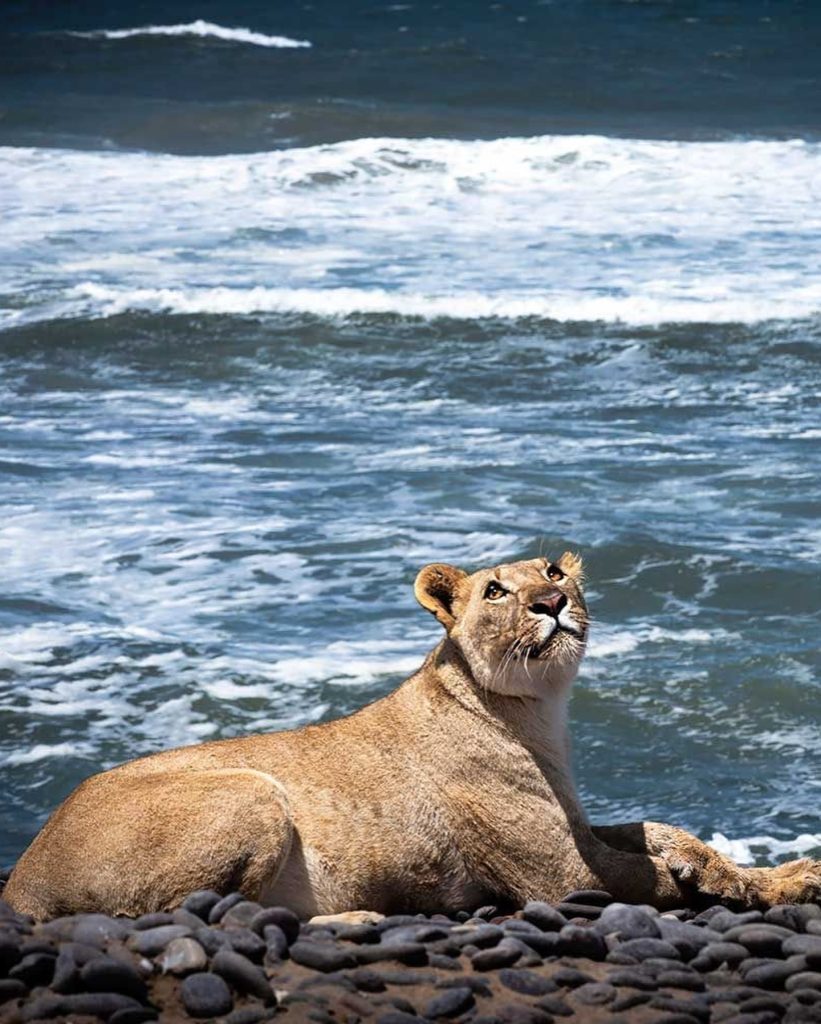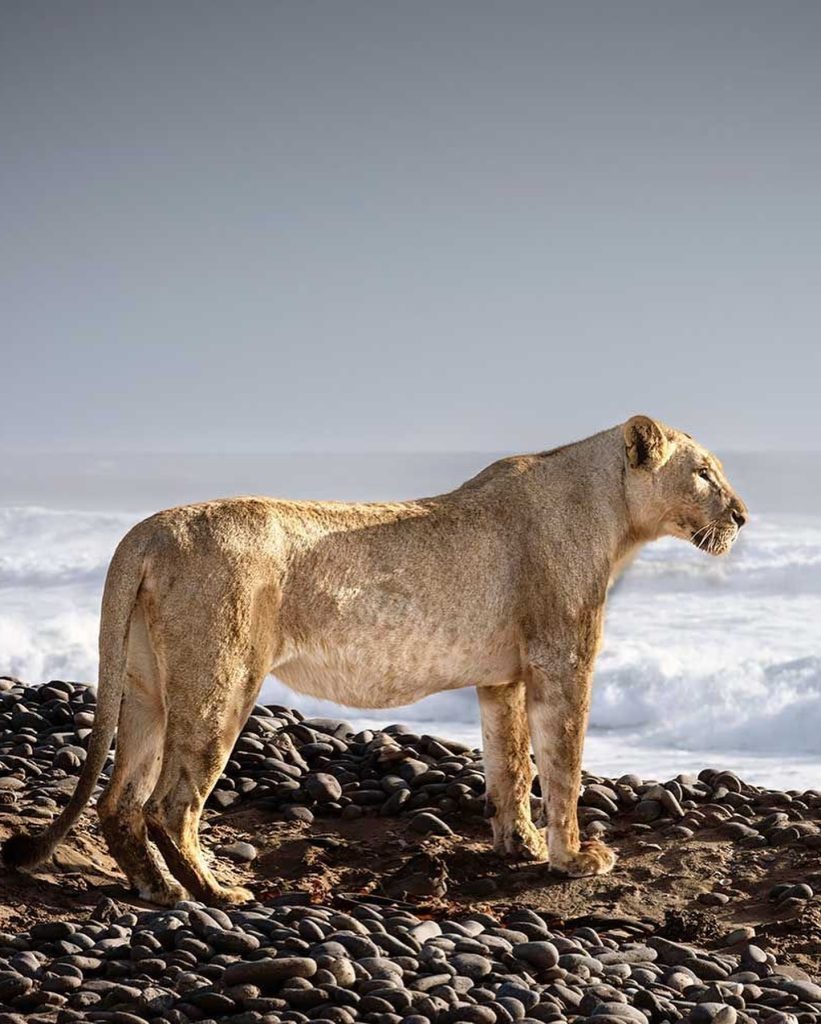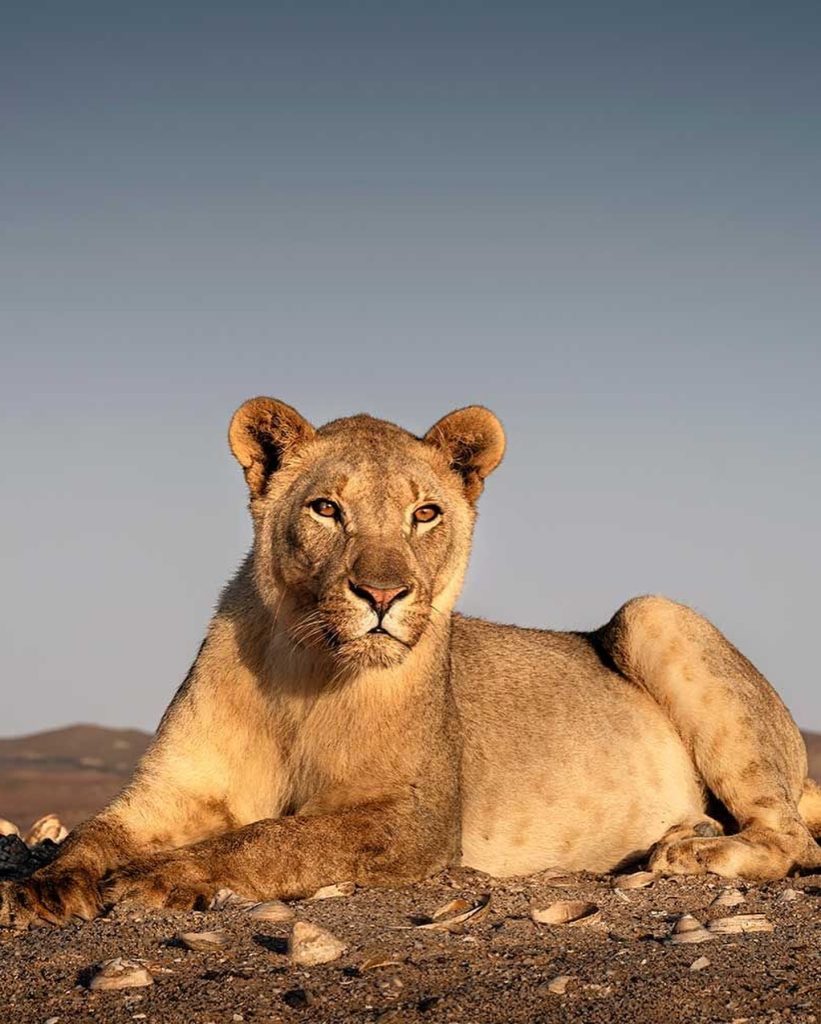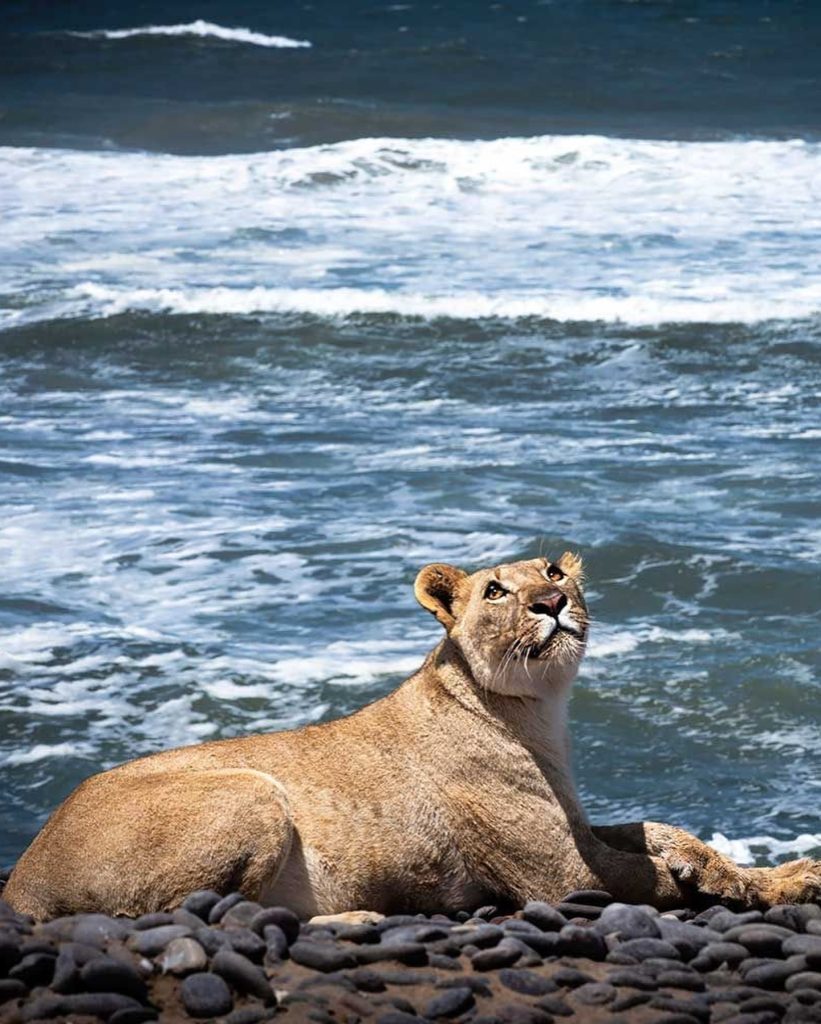From Desert to Ocean Shore: The Miraculous Journey of the World’s Only Marine Lions
I never thought I would read about lions choosing the sea over the sand. Yet, there they are—on Namibia’s Skeleton Coast, a small pride of desert lions that once roamed the country’s dry interior have now made their home by the ocean. They are the world’s only known “marine lions,” and a wildlife photographer named Griet Van Malderen is documenting every incredible moment of their new lives.

These lions are part of a rare desert-adapted population that has always been known for survival against impossible odds. They’ve endured drought, isolation, and years of disappearing prey. But recently, something extraordinary happened—some of them began migrating westward, away from the desert plains and into the coastal region of the Atlantic. It’s a place of fog, wind, salt, and roaring waves—completely different from their natural habitat. Still, they came, driven by instinct and hunger.

Griet Van Malderen has spent years following them, waiting hours in the dunes and mist just to capture one perfect image. In her photos, you can see the tension between power and fragility—the golden fur against dark pebbled beaches, waves crashing behind them, the vast emptiness of the Namib Desert fading into sea mist. One of her most famous images shows a lioness named Gamma resting near a seal carcass. It’s haunting and powerful at the same time—a symbol of survival and change.

According to reports from BBC and People, these lions have completely adapted to coastal life. They now hunt what the sea provides: flamingos, cormorants, and even Cape fur seals. It’s an astonishing behavioral shift. In one study, three young lionesses were recorded killing two flamingos, 60 cormorants, and 18 seals over 18 months. Scientists say this is the first documented case of lions hunting marine prey regularly. It shows how far evolution and necessity can push nature when conditions become desperate.
But life on the coast isn’t easy. The Skeleton Coast is one of the harshest places on Earth—cold, windy, and full of salt fog. The lions face constant hunger, long journeys between food sources, and danger from territorial disputes. Yet, somehow, they survive. Their coats have grown slightly thicker, their hunting methods more patient. They’ve learned to stalk along the surf, to blend into dunes instead of grass.
Conservationists in Namibia have been closely monitoring this pride. The country’s Ministry of Environment and Tourism, along with researchers like Dr. Philip Stander, have fitted several lions with GPS collars to track their movements. Their hope is to protect them from conflicts with fishermen and local villages while learning more about this groundbreaking adaptation.
What makes these lions so special is not just where they live—it’s what they represent. They show the remarkable resilience of nature, its ability to adapt and reinvent itself when faced with extinction. In a world where so many animal stories end in tragedy, this one feels like a fragile miracle—a glimpse of life finding a new way.
As Griet continues her documentation, her images remind us that beauty can bloom even in the most unlikely corners of the Earth. Lions walking beside the ocean shouldn’t exist. Yet they do. And maybe that’s the point—to remind us that even when the wild world is shrinking, there are still stories of courage and wonder waiting to be told.


